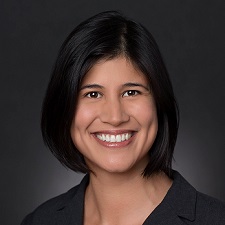The warnings to use sunscreen are very real -- skin is the largest organ of the body and the most vulnerable to DNA damage caused by the sun’s ultraviolet rays. Basal cell carcinoma (BCC), a form of skin cancer, is the most common cancer in the United States with 3 million cases diagnosed annually. These cancers tend to grow slowly, usually developing on sun-exposed areas such as the head and neck, and treatment involves surgically removing the tumor. Usually this doesn’t present complications, but some individuals develop frequent recurrences of BCC that require multiple painful surgeries and scars.
Damon Runyon scientists in the Bay Area are working on early identification, early intervention and non-surgical therapies for these individuals, who may be prevented from living normal lives because of the constant threat of BCC. They are born with Gorlin Syndrome, a genetic mutation that can lead to hundreds of basal cell carcinomas, especially on the face and sun-exposed areas. People with severe Gorlin Syndrome may have as many as 30 surgeries per year.

Clinical Investigator
Jean Tang, MD, PhD
Photo credit: Steve Gladfelter
Former Damon Runyon Clinical Investigator Jean Tang, MD, PhD, and colleagues at Stanford Medical School are working to improve the quality of life for those suffering from Gorlin Syndrome and BCC.
BCC is linked to mutations in the “Hedgehog” pathway. The hedgehog protein controls cell growth in embryos and is turned off in adult tissue cells normally. Mutations, however, can activate the closed pathway resulting in uncontrolled growth of skin basal cells. Dr. Tang and her colleagues discovered that a drug inhibiting the hedgehog pathway could dramatically shrink basal cell carcinoma tumors in patients with Gorlin Syndrome in randomized clinical trials. This allows cells to stop the overproduction of tumors.
She has led or co-led four investigator-initiated clinical trials, three of which were focused on basal cell carcinoma treatment or prevention. Phase 3 trials have launched earlier this year with approximately 100 patients. “We are excited that the FDA has designated this a “breakthrough drug” because there are no alternatives except surgery for these patients. By applying the drug topically on the skin, many of the side effects of an oral drug are avoided,” Dr. Tang said.
Mentoring the Next Generation of Cancer Research Leaders
Dr. Tang is deeply committed to training the next generation of leaders in skin cancer research. “From day one, I wanted the Damon Runyon support at the critical juncture of my career. It has proved instrumental in supporting my career,” she says. “Now, 10 years later, I have a Damon Runyon mentee and we are collaborating. There is no greater pride,” she says.

Clinical Investigator
Kavita Sarin, MD, PhD
Dr. Tang is mentoring Damon Runyon Clinical Investigator Kavita Sarin, MD, PhD. Using genetic and molecular data obtained from patients, her lab is developing ways to predict prognosis and discover new therapeutics for a variety of rare skin disorders.
“The biggest challenge I encounter when working on a rare disease is collecting a large enough group to make meaningful discoveries,” she says. “In addition to grant support, I hope to develop close collaborative ties with my Damon Runyon colleagues across institutions to augment our ability to conduct research and make ground-breaking discoveries.”
Dr. Sarin has identified mutations in DNA repair genes in 19% of patients who develop extremely high numbers of BCC. These data demonstrate the critical role of our innate DNA repair system in protecting skin cells from UV carcinogenesis and highlight the role of inherited mutations in BCC susceptibility. She is taking these findings and planning a Phase 2 clinical trial of another topical drug called an HDAC (histone deacetylase) inhibitor in patients with frequent BCCs.
“Jean Tang has been an amazing role model for me since residency. She has given me guidance on research design, academic trajectories, building a team and mentoring students. In five years, I hope to follow in her footsteps and make a meaningful impact on the lives of patients with inherited cancer susceptibility, improving our ability to diagnose early, screen appropriately, and treat precisely. I hope to inspire a next generation of scientists much brighter than me to do the same.”







